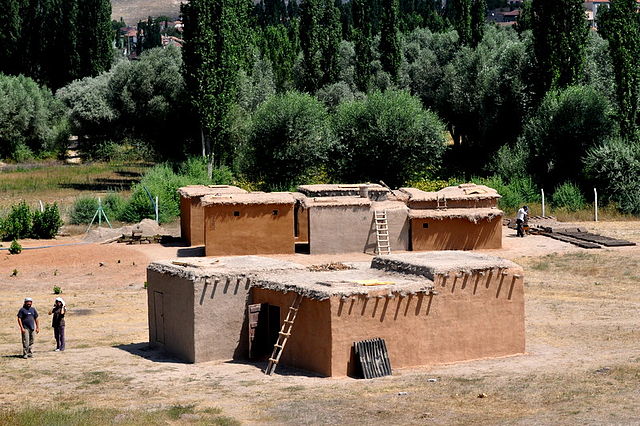Early European Farmers (EEF), First European Farmers, Neolithic European Farmers, Ancient Aegean Farmers, or Anatolian Neolithic Farmers are names used to describe a distinct group of early Neolithic farmers who brought agriculture to Europe and Northwest Africa (Maghreb). Although the spread of agriculture from the Middle East to Europe has long been recognised through archaeology, it is only recent advances in archaeogenetics that have confirmed that this spread was strongly correlated with a migration of these farmers, and was not just a cultural exchange.
Reconstruction of a Neolithic farmer from Europe, Science Museum in Trento
The Neolithic or New Stone Age is an archaeological period, the final division of the Stone Age in Europe, Asia and Africa. It saw the Neolithic Revolution, a wide-ranging set of developments that appear to have arisen independently in several parts of the world. This "Neolithic package" included the introduction of farming, domestication of animals, and change from a hunter-gatherer lifestyle to one of settlement. The term 'Neolithic' was coined by Sir John Lubbock in 1865 as a refinement of the three-age system.
Reconstruction of Pre-Pottery Neolithic B housing in Aşıklı Höyük, modern Turkey
Reconstruction of a Neolithic farmstead, Irish National Heritage Park. The Neolithic saw the invention of agriculture.
An array of Neolithic artifacts, including bracelets, axe heads, chisels, and polishing tools.
The Urfa Man c. 9000 BC. Şanlıurfa Archaeology and Mosaic Museum.





